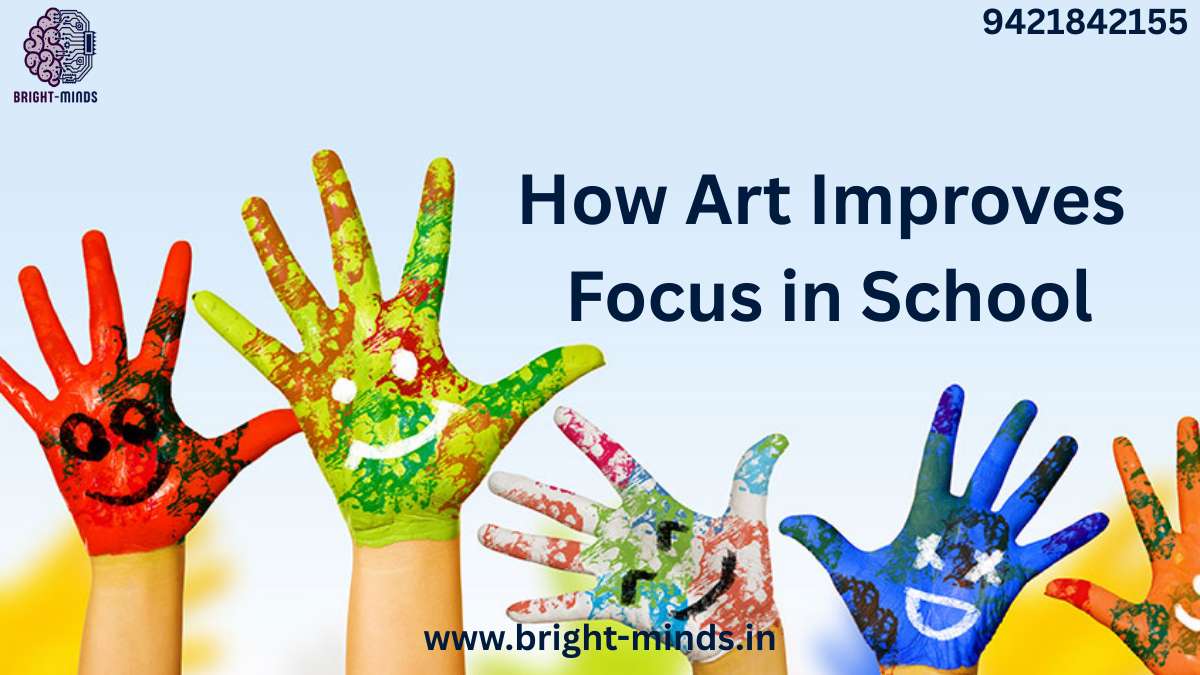In today’s fast-paced, distraction-filled world, getting kids to focus can feel like an uphill battle. Between digital screens, busy schedules, and academic pressure, students often struggle to stay engaged in the classroom. But what if the secret to better focus wasn’t more discipline… but more art?
Yes, art — painting, drawing, music, drama, and creative expression — can be a powerful tool to boost attention, cognitive performance, and overall learning outcomes. And the best part? It’s not just for “artsy” kids.
This blog explores how art improves focus in school, why it matters in both education and business, and how we can harness its power for long-term success. Whether you’re a parent, educator, or employee in the educational space, you’ll walk away with practical insights and real-world applications that can make a big impact.
Why Art Isn’t Just Extra — It’s Essential
For years, art was labeled as a “nice-to-have” — often the first subject cut from budgets or downgraded in importance. But mounting research proves otherwise. Studies show that students who engage in regular artistic activities:
- Score higher in math and reading
- Exhibit stronger memory retention
- Demonstrate greater focus and classroom engagement
- Develop improved problem-solving and critical thinking skills
This is because art activates multiple areas of the brain at once — visual, motor, auditory, and emotional — creating neural connections that boost concentration and retention.
Think of it like this: when a child paints a landscape or learns a song, they’re not zoning out — they’re zoning in.
Market Trends: The Rise of STEAM Over STEM
Traditionally, the focus has been on STEM education — science, technology, engineering, and math. But now, there’s a shift toward STEAM, where the “A” stands for Art.
This isn’t just a buzzword — it’s a strategic movement. Companies like Apple, Google, and Pixar are vocal supporters of integrating creativity into technical disciplines. In fact, many leaders in tech and innovation attribute their success not to coding alone, but to their ability to think creatively and focus deeply, often fostered by early exposure to the arts.
As demand grows for well-rounded, innovative thinkers, educational institutions and companies alike are recognizing the power of art to train minds to focus, observe, and problem-solve — all critical skills in both school and the workplace.
Real-World Examples: Art in Action
Case 1: Focus Through Music
A fifth-grade class in Ohio began incorporating 10 minutes of music education each morning before core subjects. The result? Students reported feeling calmer, and teachers noted fewer behavior issues and improved attention spans throughout the day.
Case 2: Visual Arts and Memory Retention
In a California middle school, teachers integrated drawing exercises into science lessons. Students who illustrated key concepts had higher test scores and better recall than those who used only traditional note-taking.
Case 3: Theater Boosting Public Speaking
A school in New York offered drama classes to shy students with low participation. Within months, these students showed greater confidence, focus, and verbal communication skills, translating into better academic performance overall.
These aren’t just happy accidents. They’re the results of art enhancing focus, engagement, and brain performance.
5 Ways Art Builds Focus in the Classroom
Here’s how art improves concentration, and how you can integrate it into learning — whether at school or at home:
1. Art Encourages Mindful Attention
Creating art requires children to slow down, observe details, and concentrate on a single task. This helps train the brain to resist distractions and stay present — a skill essential for focus in any subject.
2. It Offers a Mental Break
Art can act as a cognitive “reset.” When kids are overwhelmed or overstimulated, artistic activities help reduce stress and refresh attention, making it easier to return to academic tasks.
3. It Taps Into Emotional Engagement
Kids are more likely to focus on things they care about. Art allows them to express their feelings, making learning emotionally meaningful — and thus more memorable.
4. Art Builds Discipline Through Repetition
Practicing drawing, playing an instrument, or rehearsing a performance teaches kids to persist, revise, and improve over time — all of which require focus and delayed gratification.
5. It Strengthens Brain Connectivity
Engaging with art stimulates both hemispheres of the brain. This boosts executive functions like working memory, attention control, and flexible thinking — the mental “muscles” behind focus.
Why This Matters for Education Companies
If you work at an educational company, understanding how art enhances focus is more than trivia — it’s a strategic insight.
Product designers can create more engaging tools by weaving in visual or auditory elements. Marketers can connect with parents and educators by highlighting the science-backed benefits of art. And curriculum developers can innovate by embedding artistic tasks that support academic goals.
In short, recognizing how art supports focus helps us build better solutions, serve customers more effectively, and support a generation of learners who are not only knowledgeable — but also attentive, expressive, and innovative.
Ready to Make Art Part of the Learning Journey?
Art is not an “extra.” It’s a focus-building powerhouse that can transform how children engage with learning — and how adults support them.
Also Read:
https://bright-minds.in/unlocking-word-meaning-for-class-ukg-english-to-hindi/

